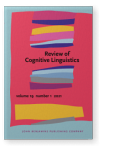Vol. 19:1 (2021) ► pp.206–231
The Three Grammars and the sign
This article presents an original three-component model of the linguistic sign. It shares with the established triadic models of Peirce (1955 [1897]) and Ogden and Richards (1923/1949) in identifying thought, word and thing as essential components; but differs in being linear, with thought and thing at opposite poles. It is argued that this arrangement reflects the way the components of the sign relate to reality and thereby serves well as an explanatory tool for linguistic research. The model is further modified at each of the ontological realms using concepts from cognitive linguistics, renamed cognition, language and reality. The new model is employed as a research tool in two case studies: one illustrates its use in making sense of the complex field of language grammar; the other does the same for figurative language – metaphor and metonymy. The article’s conclusions include that interrogating established cornerstones of linguistic theory in the light of new theory can lead to the development of improved research tools.
Article outline
- 1.Introduction
- 2.Modelling the sign – Developing a linear triadic model
- 3.Modifying the basic linear model of the sign using concepts from cognitive grammar
- 3.1Abstract things
- 3.2The semantic narrowing of words
- 3.3Complex thoughts
- 4.Case study 1 – Grammar
- 4.1Generative grammar
- 4.2Functional grammar
- 4.3Cognitive grammar
- 4.4The Three Grammars and the value of a semiotics perspective
- 5.Case study 2 – Figurative language
- 5.1Metaphor
- 5.2Metonymy
- 5.3Metaphor, metonymy and the Three Grammars
- 6.Concluding remarks
-
References
